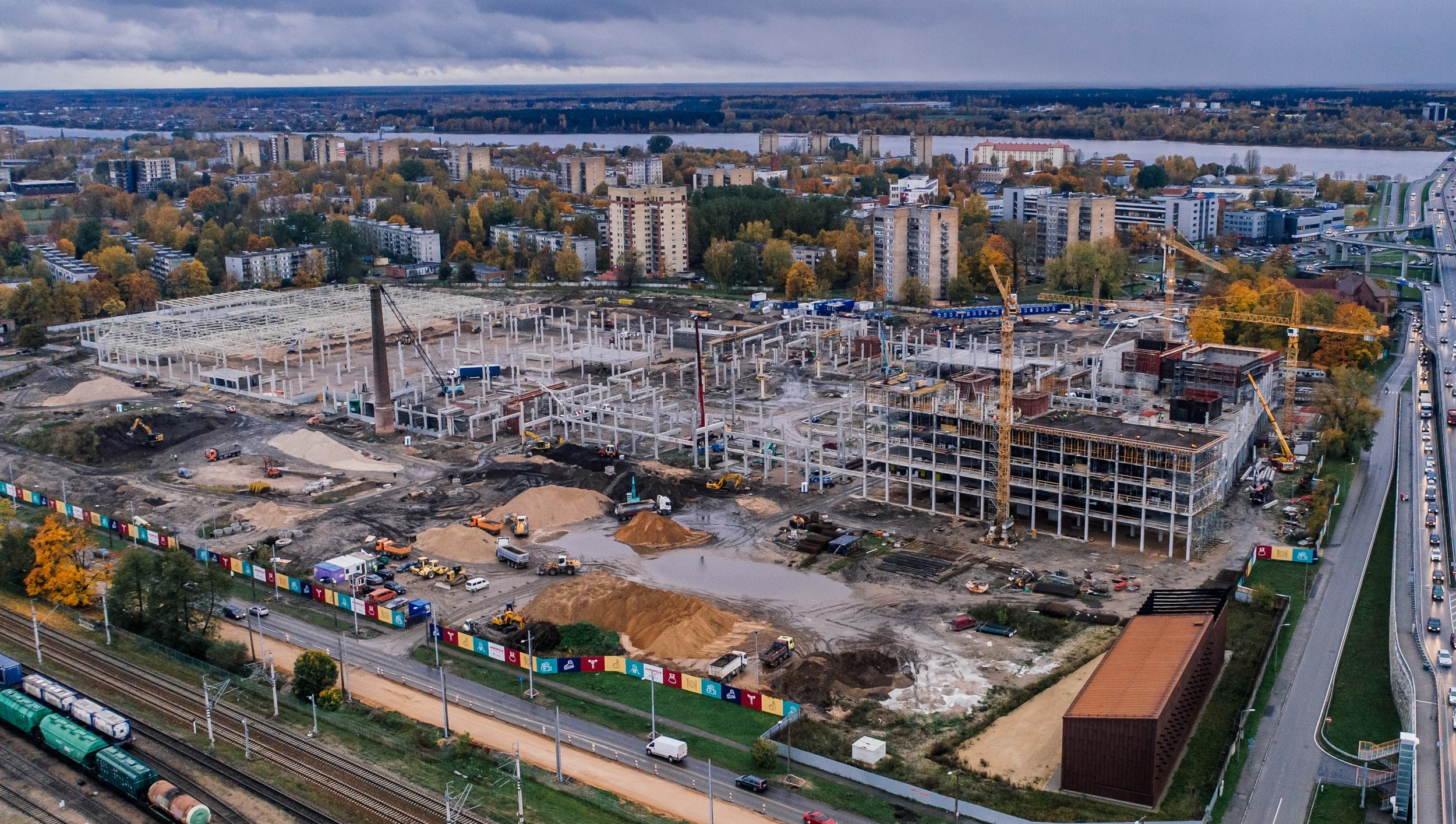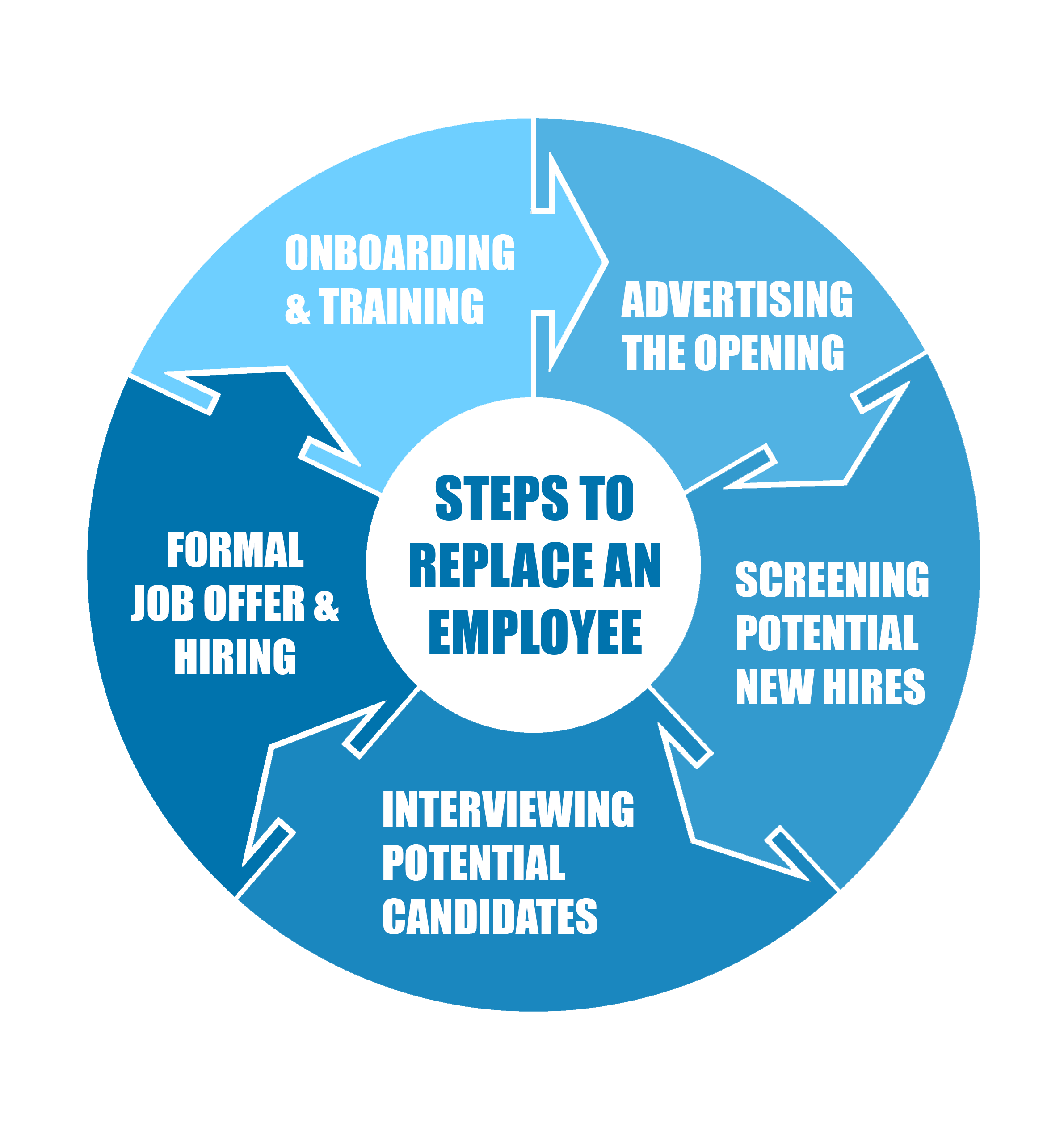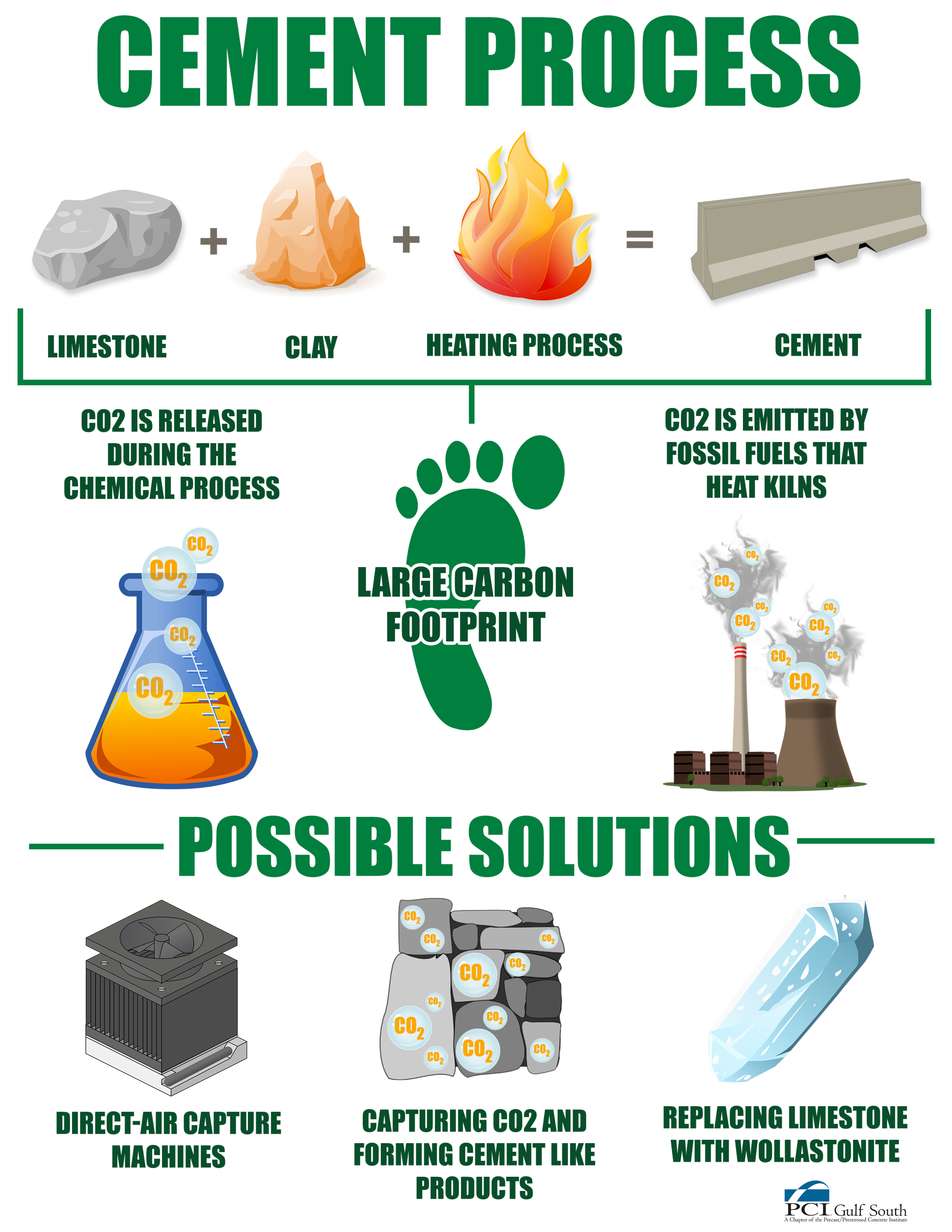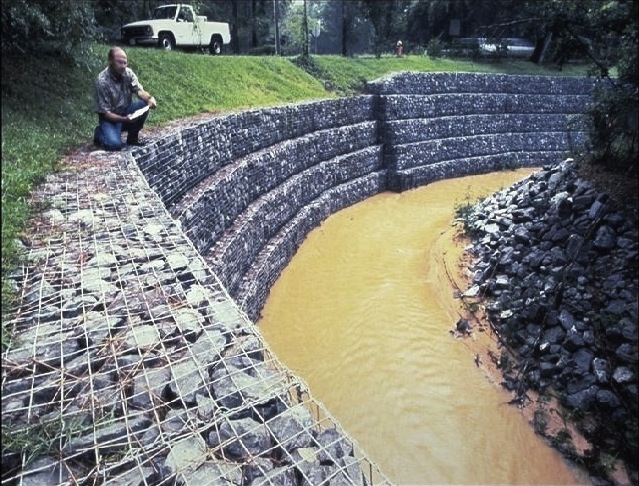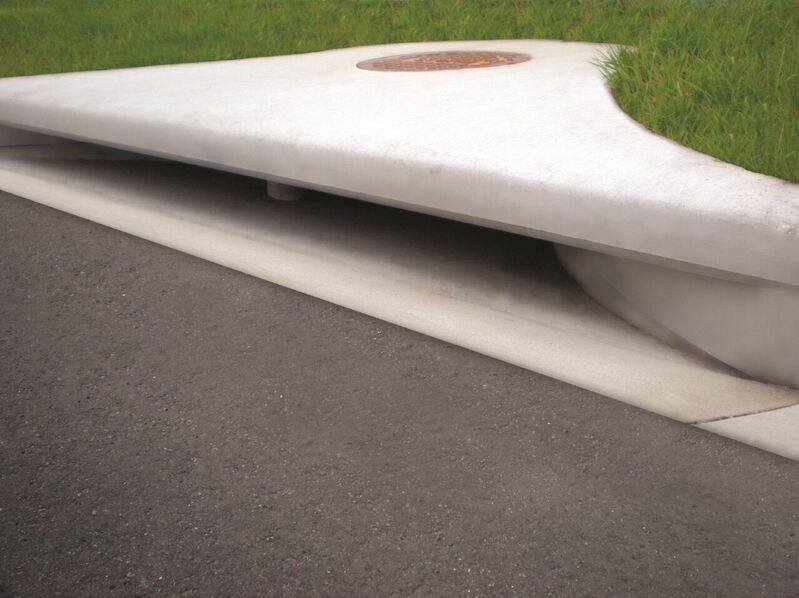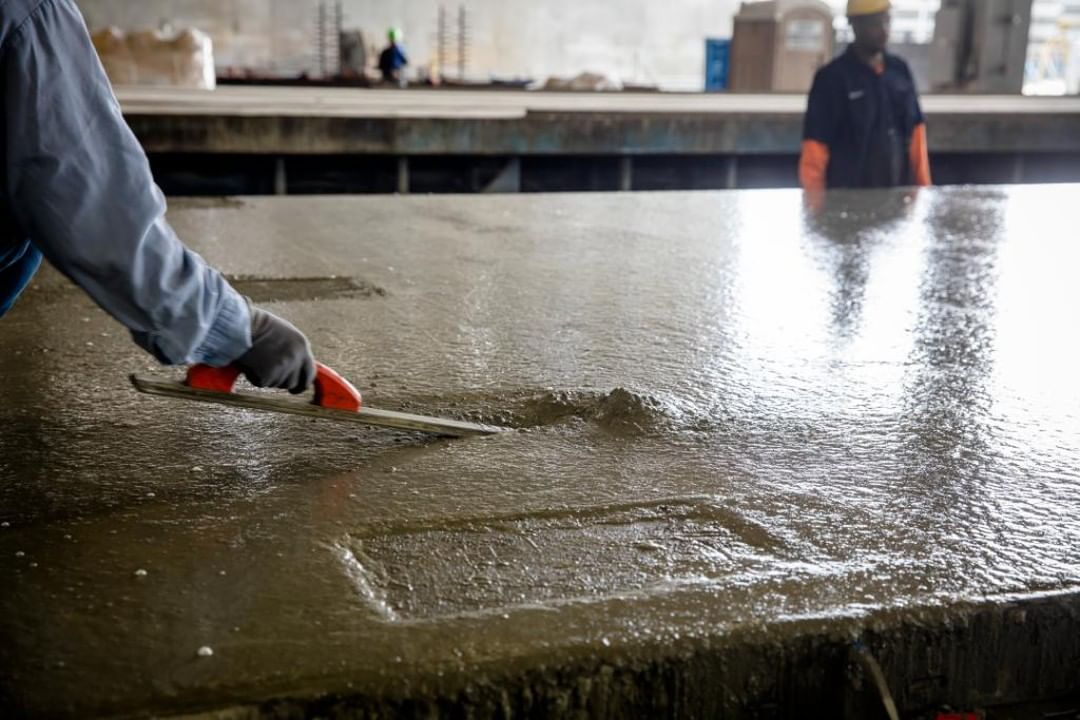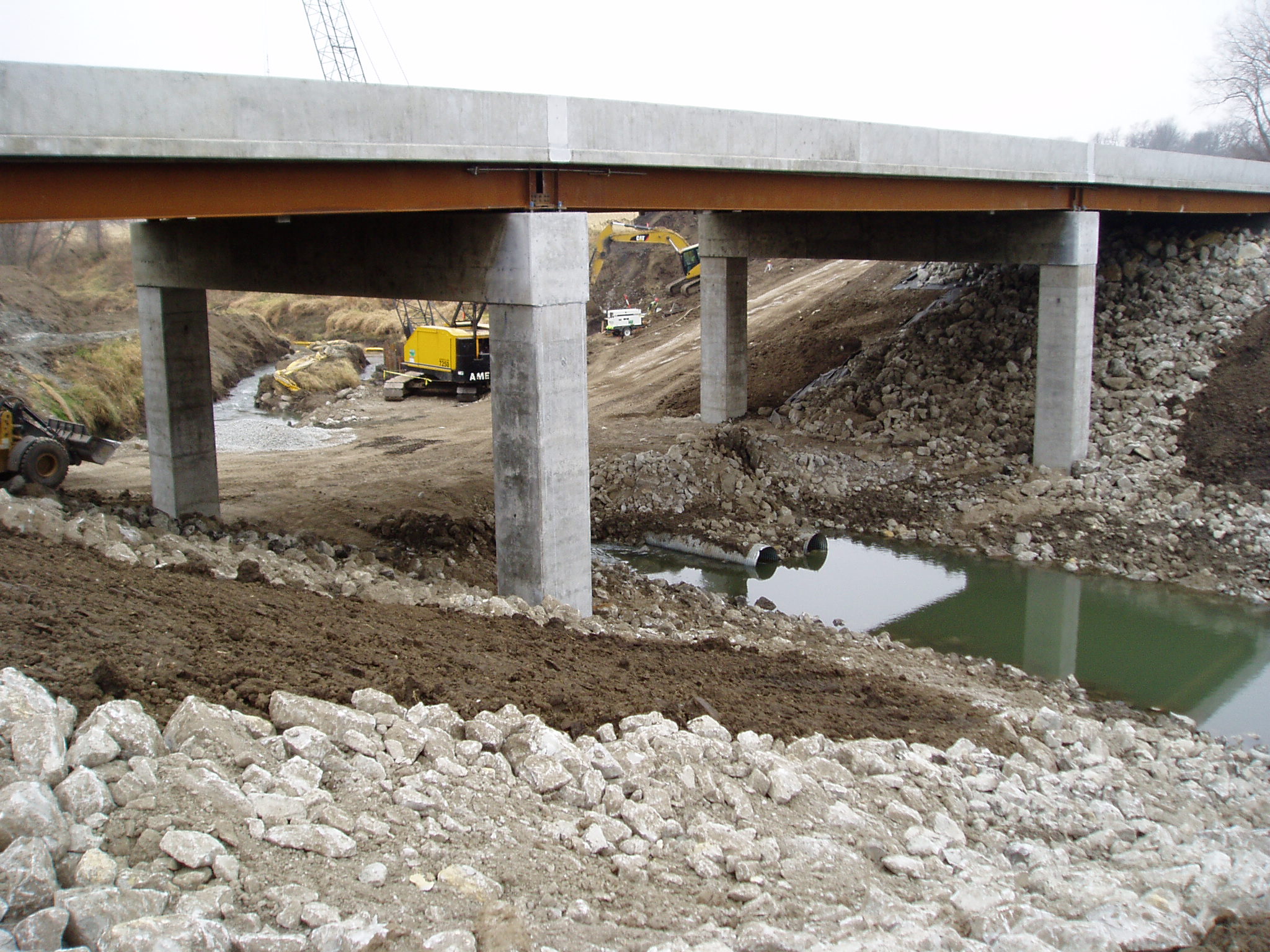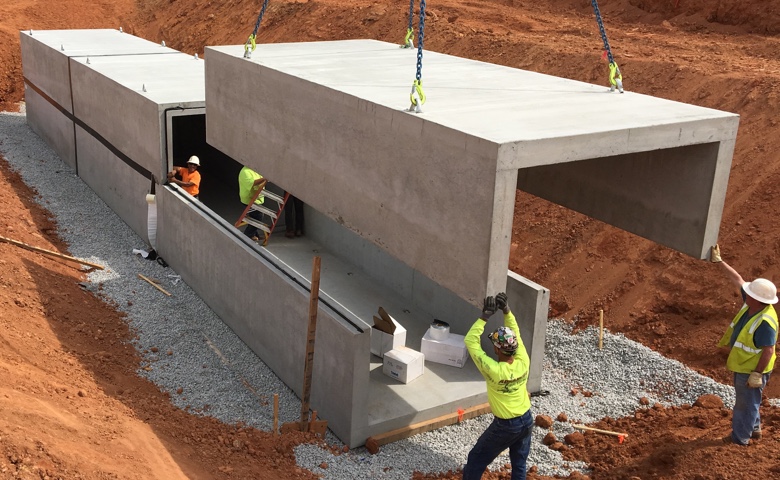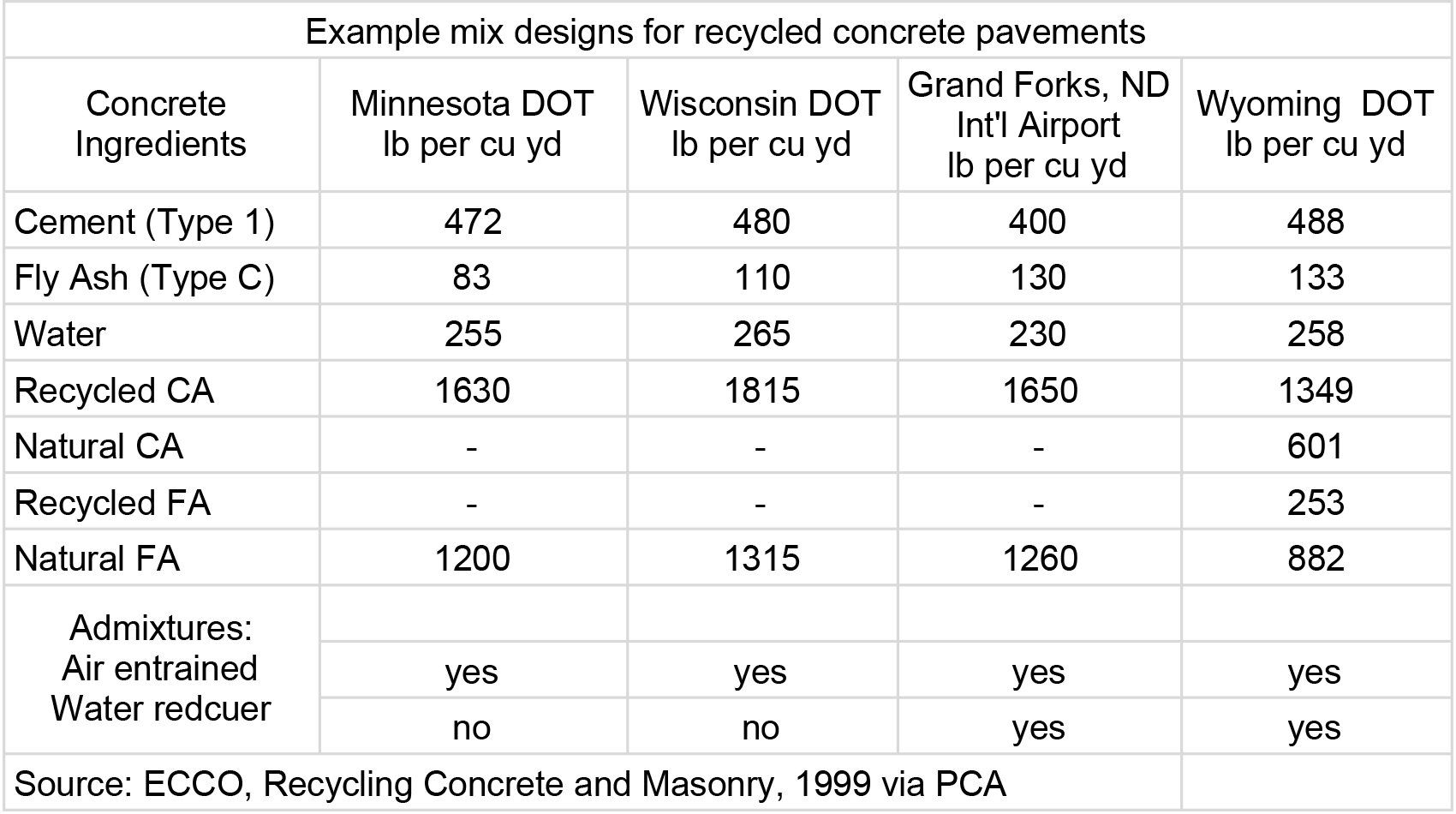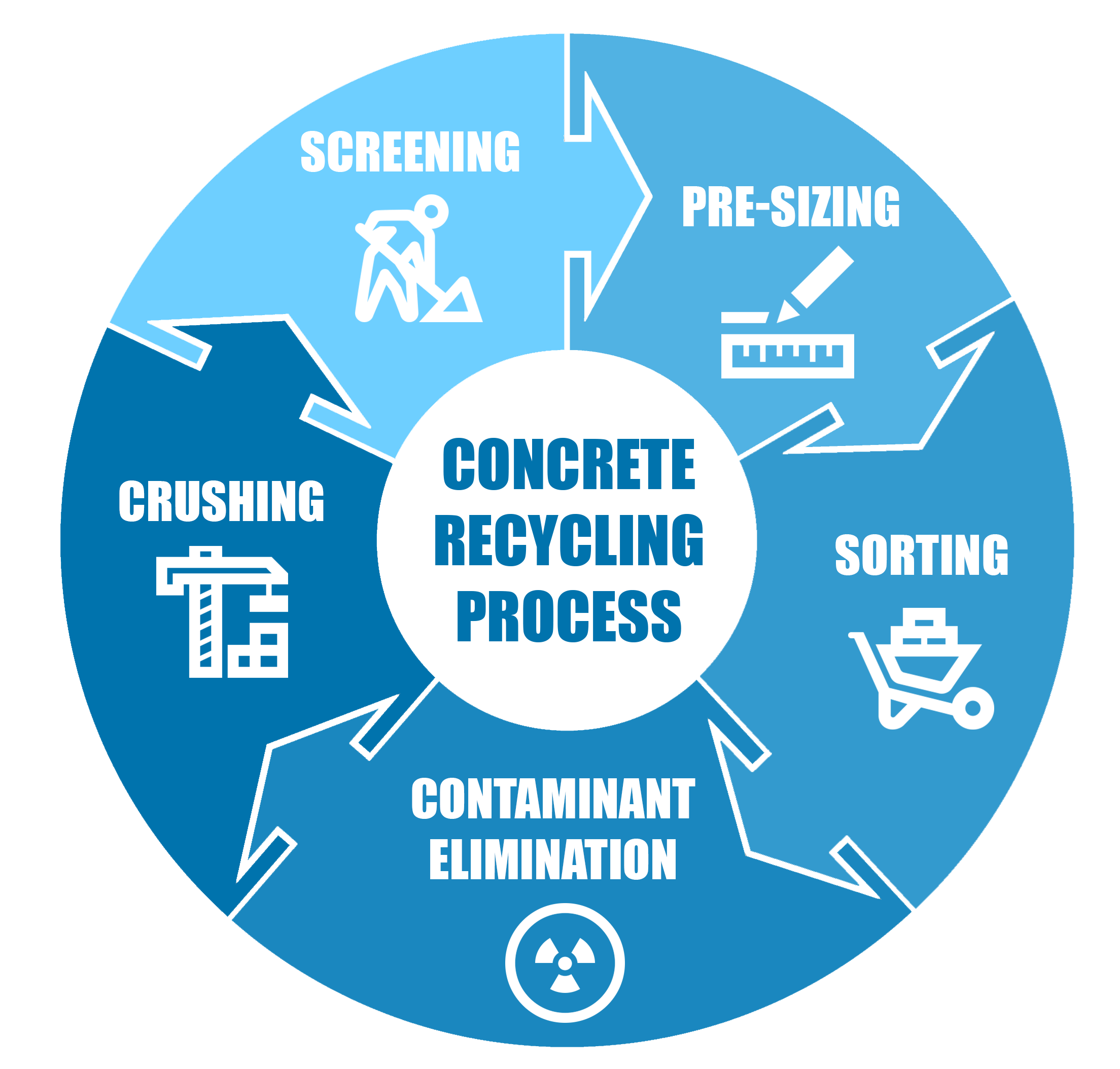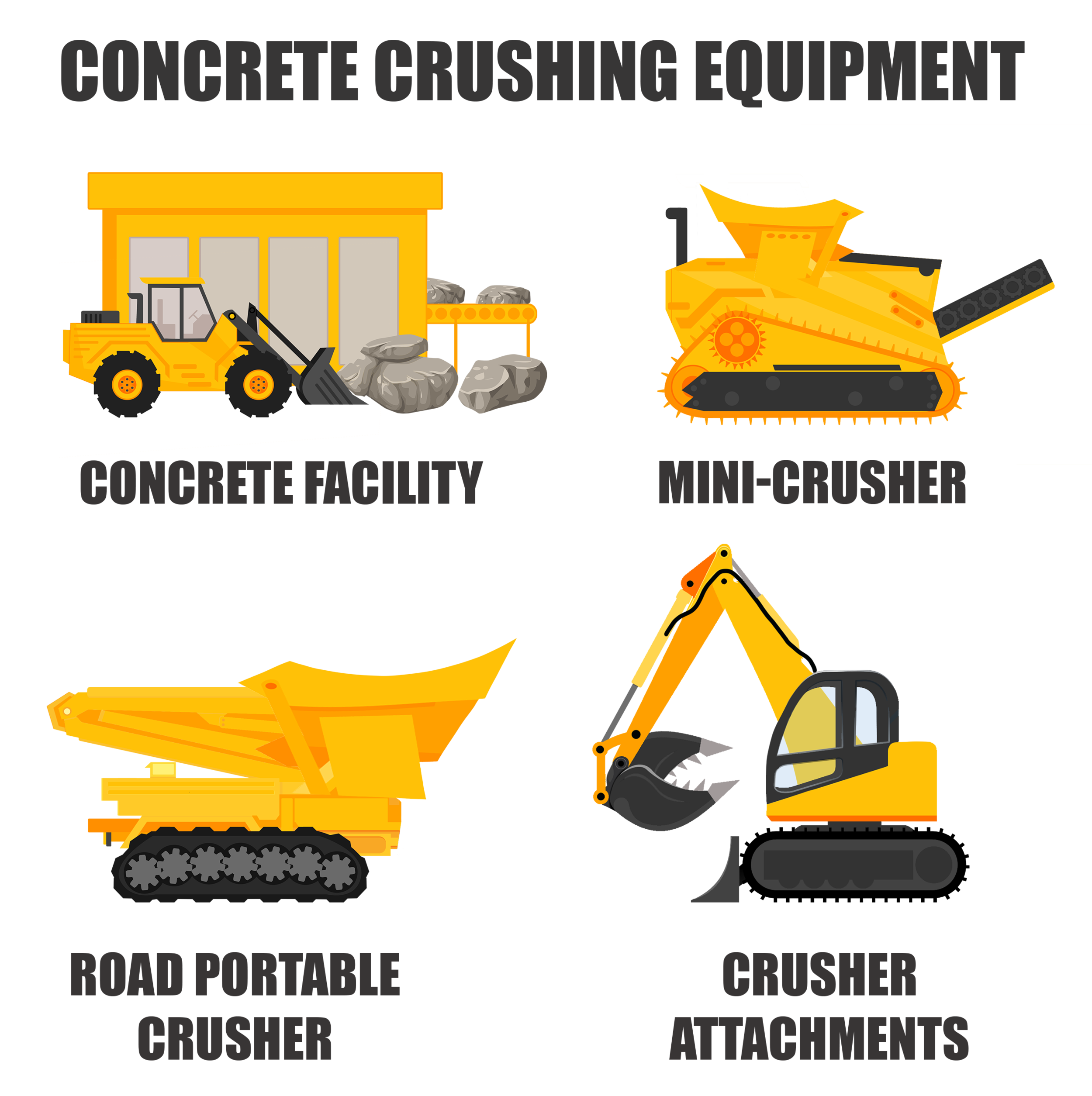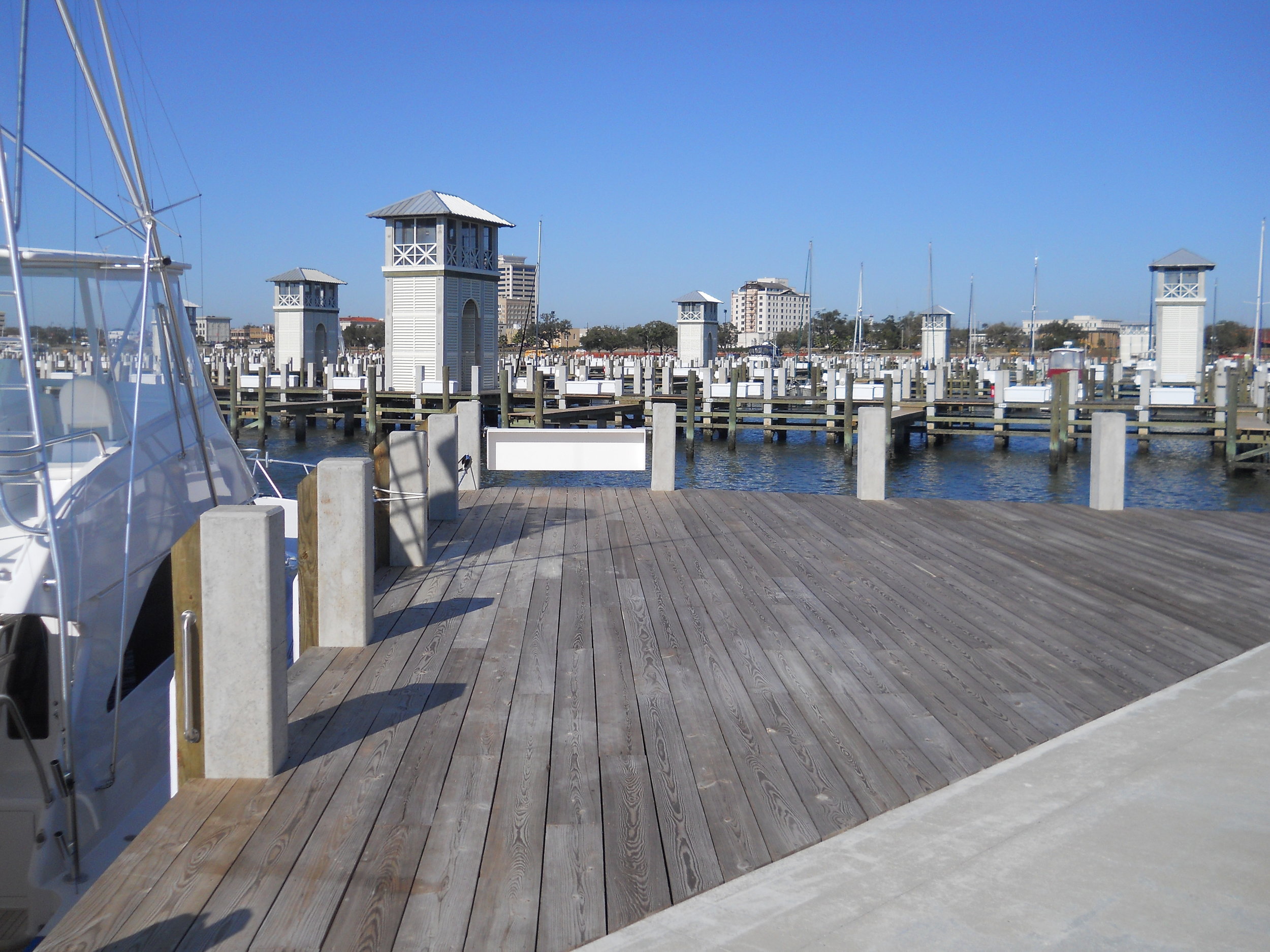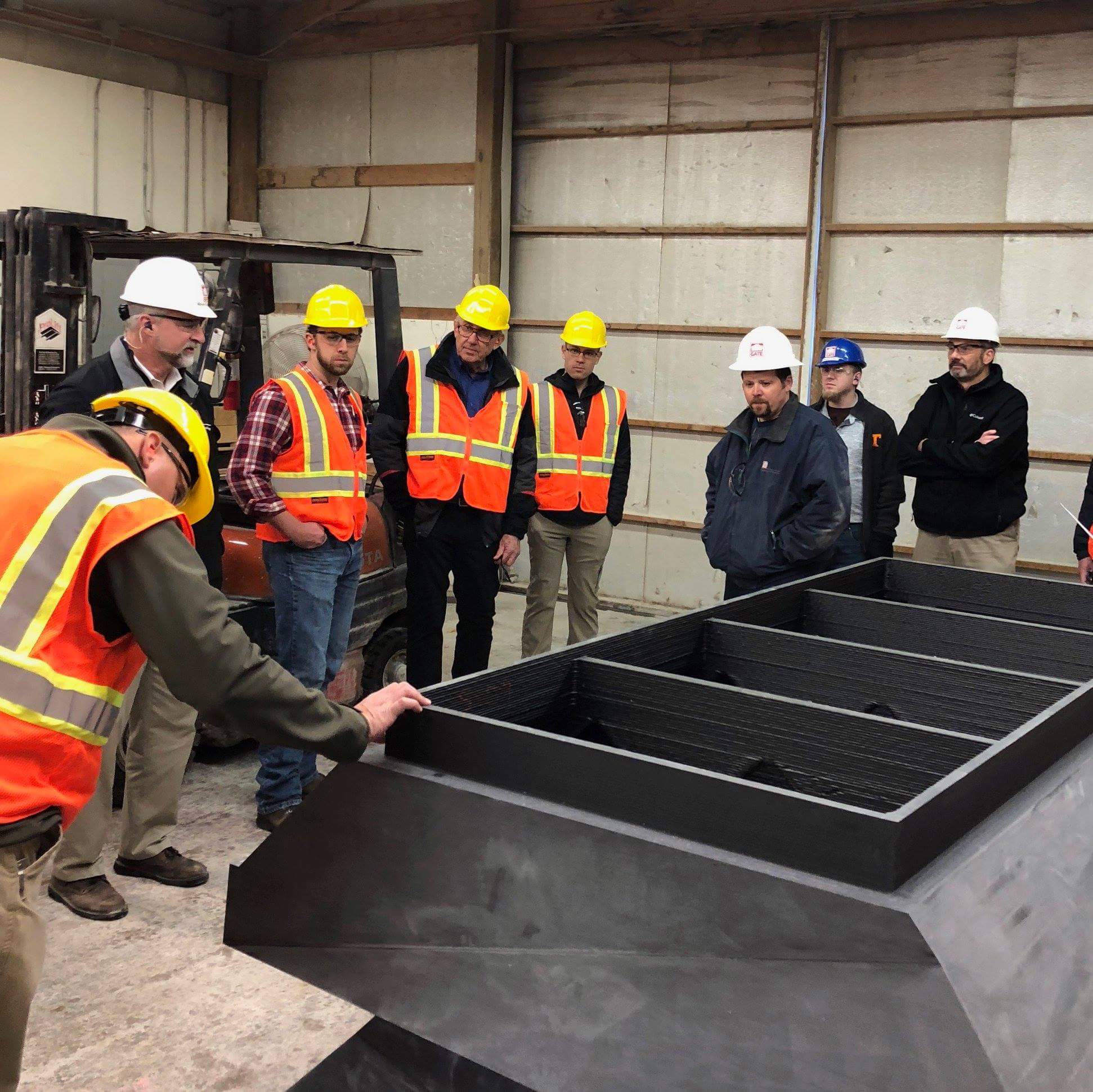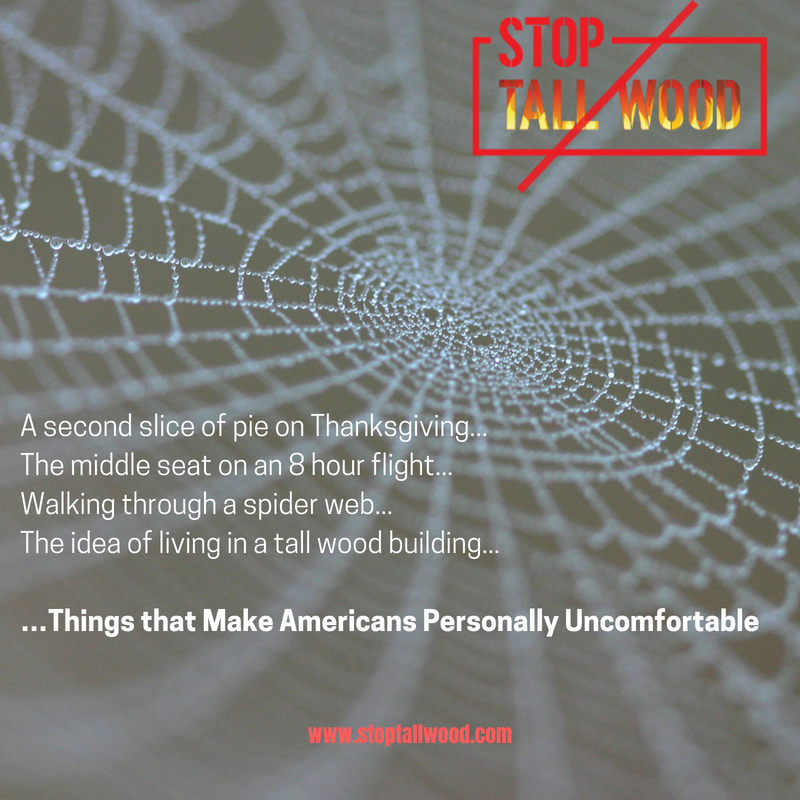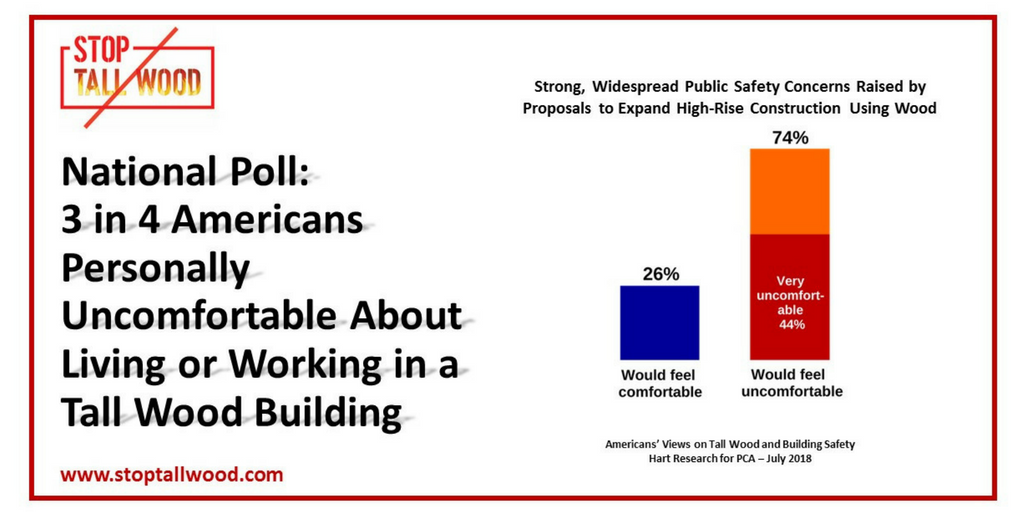Drones Offer a Bird's Eye View on the Job
A bird’s eye view is an invaluable tool on a construction jobsite. Through the use of drones, the building industry is reaping the rewards of this high-flying technology.
A bird’s eye view is an invaluable tool on a construction jobsite. Through the use of drones, the building industry is reaping the rewards of this high-flying technology.
WHAT CAN A DRONE DO FOR YOUR PROJECT?
Assist the estimator with providing a more accurate bid, as well as look for potential ways to save/make money on a job.
Assist with job set-up by allowing for a overall view at the onset of the project.
Provide the opportunity to gather aerial images to share with owners/financiers/employees. Images offer information in a quick and concise way that is sometimes difficult to convey with words.
Allow for monitoring of such things as progress tracking, safety issues, resources on the jobsite, issues/problems, surveying, measuring.
WHO BENEFITS THE MOST FROM DRONES ON THE JOBSITE?
According to www.dronedeploy.com, drones are most commonly used by those individuals who are responsible for the time/cost/progress on projects. Project managers, tech managers and job superintendents rank as the top users of drones on a day-to-day basis. The 2018 Commercial Drone Industry Trends Report breaks down the trends and statistics of drone usage in the construction industry. The 239% increase in drone usage in this industry alone provides a window into how this form of technology is changing the way the building industry does business.
HOW CAN MY COMPANY GET STARTED USING DRONES?
For an informational introduction to drone usage on the construction site, DroneDeploy offers a free,useful eBook that details this time and money saving technology. There are many types of software that dovetail nicely with drones such as:
Unmanned aircraft systems (UAS) such as drones will likely continue to advance in capability and reliability as increasing numbers of companies employ the technology. Drones provide your workforce with an unconventional “tool” to assist with saving time/money/manpower.
Employee Retention: The Cost of the Rotating Door
Employee turnover is one of those expected and unavoidable facets of running a business. Although it’s experienced by most companies with some regularity, if you find you’re consistently “on the hunt” for new employees, you need to take a serious look at what’s causing the rotating door at your workplace.
Employee turnover is one of those expected and unavoidable facets of running a business. Although it’s experienced by most companies with some regularity, if you find you’re consistently “on the hunt” for new employees, you need to take a serious look at what’s causing the rotating door at your workplace.
What makes some employees stay and other employees leave a company? As a manager or owner ask yourself:
Have I provided each of my employees with a clear description of duties/expectations for their position?
Does the salary square up with the responsibilities and level of experience the employee brings to the job?
Is there a well-defined process for employees to communicate with fellow employees and management?
Does the company value and ENCOURAGE employee input and routinely ask for suggestions/ideas from employees to both improve the work environment and/or solve problems as they arise?
Is there a potential for growth/advancement within the company and is the company willing to assist with advanced education to allow highly motivated employees the opportunity to build their skills/knowledge for advanced level positions with the company?
Does the company strive to create a team environment and work to build morale?
Are employees valued and included in the success of the company by way of salary increases/bonuses/time off etc?
Does the company play a supportive role in the community by way of fundraisers/events that support the needs of the local area?
Does the company offer summer programs for local college students or internships that act as a pipeline for potential future employees?
Does the company celebrate the achievements of employees through newsletters/social media posts/company announcements etc?
Was there an adequate on-boarding/training period for the new employee to ensure success and productivity?
Was the position accurately described during the interview process and was a clear picture painted from the start?
Statistics clearly show, it’s more cost effective to train and retain current employees than to begin anew with fresh hires on a routine basis. The Center for American Progress estimates that the loss of a seasoned employee is equivalent to 200% their annual salary. Consider this, for each employee that needs to be replaced, the tasks shown to the right need to be completed.
Every employee who walks out the door takes their experience and knowledge with them which results in lost productivity, lost engagement with clients, and potential errors made by temporary or new employees.
A LinkedIn survey of 13,000 millennials was conducted to address exactly WHAT is the key to attracting and retaining a beginning level employee. Surprisingly, salary was not the top response but instead, the younger workforce is looking at :
One not surprising finding is that millennials respond well to companies that offer assistance with the repayment of their student loans even though only 4% of companies nationwide offer such a benefit.
Employee turnover is part of the business arena that will always be an issue. How big of an issue, it is depends on how well you select the best candidate(s) for your positions and how well you integrate them and value them in the company hierarchy. The answer for the BEST employees might be in front of you already, not behind the next resume. Reward and retain...it’s a win-win for everyone.
Check out how the precast industry is dealing with employee retention by taking a look at our blog post The Struggle to Attract Skilled Workers to the Construction Industry.
General Contractors Embrace Precast Concrete Systems
General contractors often have the ability to influence owners/financiers to choose particular building products when tasked with a new construction project. From the contractor’s point of view, delivering a quality project, under budget and on time is paramount to customer satisfaction. That’s a mighty big order that becomes more achievable with the use of precast concrete components and/or systems.
General contractors often have the ability to influence owners/financiers to choose particular building products when tasked with a new construction project. From the contractor’s point of view, delivering a quality project, under budget and on time is paramount to customer satisfaction. That’s a mighty big order that becomes more achievable with the use of precast concrete components and/or systems.
How can precast concrete help the general construction industry?
TIME-TIME-TIME
There is never enough time! Construction schedules dictate every phase of a project. Phase One needs to be completed before Phase Two can begin and Phase Two must be completed before Phase Three etc. Problem is, sometimes unforeseen circumstances push or condense schedules and create time crunches and delays. If a project is set to use cast-in-place concrete and the weather decides to be uncooperative, time is lost. Time is money and money lost cuts into the bottom line. The beauty of precast concrete is that it is manufactured in a controlled atmosphere off site and delivered ready to erect. It can rain for a solid week and have no effect whatsoever on the manufacturing process.
Photo via Gate Precast
Tight Spaces
Precast Concrete is unique in its ability to squeeze into tight spaces. The construction of new structures in well-established areas is made faster and easier with the use of precast components. This allows for less disruption to existing businesses, traffic flows etc.
The World War II Museum in downtown New Orleans in an example of a large scale structure that was constructed in a tight space using precast concrete.
Work Safety
It stands to reason that the less equipment moving around a job site equates into a smaller chance of worker accident/injury. Highly skilled erection crews and crane operators make quick work of lifting precast components into place without a lot of manpower. Compare this to the alternative of having manpower build forms, guide concrete trucks into place, pouring concrete on site, waiting for curing and then removing form-work. The cast in place process is both time-consuming and provides countless opportunities for worker accidents/injuries, whereas the use of precast concrete systems/components eliminates a large percentage of workers on active job sites.
Photo via Tindall
Quality/Versatility/Durability
PCI certified precast manufacturing plants employ the most stringent standards of quality. General contractors and owners can rest assured that when concrete products roll up to the job site, they are top quality and built to last. Add the versatility of being able to create whatever color/texture/style desired and you have a rock solid case for the use of precast concrete in nearly any application.
View our gallery of precast colors and textures.
General contractors face a myriad of challenges on the job site. Precast concrete components/systems offer a time-tested, common sense solution available in aesthetically pleasing options to meet the requirements of even the choosiest of owners. The precast concrete industry stands ready to provide both value and versatility to your design.
The Crawl Toward Carbon Neutral Concrete
As practical, versatile and cost effective as concrete is, it suffers from one not so appealing characteristic. Concrete requires the use of cement and cement production is a huge producer of carbon dioxide.
Catch words like sustainable, durable and resilient dot the landscape of the construction industry. To fulfill those highly desirable attributes, concrete, in all its forms - has become THE go to material. As practical, versatile and cost effective as concrete is, it suffers from one not so appealing characteristic. Concrete requires the use of cement and cement production is a huge producer of carbon dioxide.
As of 2017, it is reported that 5% of global emissions annually are the result of cement production. That is two times greater than the aviation industry. Although the ingredients in cement themselves are green, the process required to create cement emits greenhouse gases.
Because there is likely no other building material that will ever take the place of concrete as a sustainable option, the push is on to explore technologies that will enable the capture and repurposing of carbon dioxide emissions during the production process.
Photo of a DAR Machine via Giatec
One such technology that has yet to win mainstream accolades is known as Direct-Air Capture (DAR). It is essentially a machine that acts like trees. Ambient air is passed over solid/liquid substances that act as magnets or sponges to attract CO2 particles. After the substances become fully saturated, energy is used to release the particles in a purified form.
Other such technologies involve capturing the CO2 from smokestacks and joining it to lime to form cement-like products or creating a new cement recipe by replacing the limestone with a material called wollastonite - a low carbon alternative to limestone.
Regardless of whether these or some yet to be discovered technology provides the CO2 emission solution, the cement industry both recognizes and respects the need for an improved process of cement production. As building gains steam in all corners of the world, so to does the push for environmentally sound practices with long range vision.
Precast Concrete Recycling Makes Good “Cents”
The construction and demolition industries are making impressive strides toward combating the excessive amount of debris being deposited into landfills. Currently, at least 25% of all solid waste finding its way to landfills comes in the form of construction/demolition waste with concrete debris comprising 70% of that amount.
The construction and demolition industries are making impressive strides toward combating the excessive amount of debris being deposited into landfills. Currently, at least 25% of all solid waste finding its way to landfills comes in the form of construction/demolition waste with concrete debris comprising 70% of that amount. According to the EPA, of the 375 million total tons of annual construction waste, 157.4 million tons comes from road and bridge demolition alone.
As staggering as those figures are, the Construction & Demolition Recycling Association reports that 140 million tons of concrete is recycled each year. With pressure from environmental watch groups, as well as laws/restrictions, concrete recycling has become a mainstream part of construction operations.
What are the benefits of concrete recycling?
Reduced tippage at landfills
Reduced freight hauling costs when crushed on-site
Cheaper aggregate than virgin aggregate
Reduces construction costs (.25 per mile per ton to haul & $100 per ton to dump)
Conserves natural resources
Environmentally friendly practice (reduces air/water contamination)
Recognized by LEED Green Building rating point system
Credit awards for 50% diverted waste from landfills by Construction Waste Management
The Varied Uses of Recycled Concrete
So what and how do companies handle the concrete waste from their demolition sites? These are some of the common markets for recycled concrete:
Airport Runways
Erosion Control Structures (i.e. gabion cages)
Photo via Forterra
Gutters
Building Foundations
Photo via Tindall
Add a portion of recycled aggregate to virgin aggregate in new mixtures
Underpass Abutments
Top Use: Base Course (Road Base) for new roadways
Photo via Tindall
Pipe Bedding
States Put Recycled Concrete To Good Use
Table via PCA
According to the Portland Cement Association, a recent FHWA study found 38 states are using recycled concrete as an aggregate base and 11 states are using recycled concrete in new portland cement with equal performance reporting. In one case study conducted in October 2009 at the Chicago O’Hare Airport, two new runways were constructed side-by-side. One lane was constructed of completely virgin aggregate. The other lane was constructed with a mix of recycled concrete/virgin aggregate. Sensors were placed to record data. After five months of monitoring, both lanes were recording statistically that same results.
The Process
The process of recycling concrete is relatively simple. With five steps, it’s a relatively easy process to follow to reduce not only environmental impacts, but also increase cost savings.
There are a variety of concrete recycling machines that can be used to recycle concrete either on-site or at a recycling facility. Crusher attachments for heavy equipment can crush 100 tons per hour, mini-crushers can crush 150 tons per hour, and road portable crushers can crush over 600 tons per hour.
Conclusion
It makes good sense and good “cents” to protect both the environment and the bottom line of construction and demolition by incorporating concrete recycling into job operations.
PCI Gulf South certified producers take protecting the environment seriously. Few industries are as focused on moving towards sustainable solutions as the precast concrete industry. Precast is not only a durable solution, it’s one that contributes to sustainable design in a multitude of ways.
3-D Printing Finds a Home in the Precast Concrete Industry
Every industry evolves with the creative genius of its leaders. Often times, a recurring problem or difficult situation forces management to look for a better way. Such is the case in the precast concrete industry.
Every industry evolves with the creative genius of its leaders. Often times, a recurring problem or difficult situation forces management to look for a better way. Such is the case in the precast concrete industry.
A typical precast project begins the manufacturing process in a couple of different ways:
Wooden Forms
One way is with the construction of a wooden form by an in-house carpenter who carefully adheres to the specifications for the precast panel (or other item) being made. Wooden forms can be built in any size or shape but they do not stand up to the wear and tear of the manufacturing process and require maintenance after 15-20 runs. Wooden forms also require the manpower to build and the expertise of carpenters who are becoming harder and harder to come by.
Steel Forms
Other times, precast producers use/re-use steel forms purchased from companies who specialize in these products (i.e.Hamilton Form). Steel forms are great because they last a long time and can be used over and over with proper maintenance. The downside of the steel forms is that they are not adaptable, mostly used to produce the same size/style of precast component over and over and they are costly.
Enter the innovative, time and money saving technology known as 3-D printing. PCI Gulf South precast producer Gate Precast embraced this “new” technology with the recent Domino Sugar Refinery project in Brooklyn, NY. In an attempt to save time and money for the project owners and create a beautiful structure with many variations to the panels, Gate utilized 3-D printing to create unique forms into which the concrete was poured and panels created.
Old site of the Domino Sugar Refinery project in Brooklyn, NY. Photo via the Brooklyn Daily Eagle.
3-D printed windows arriving at the Domino Sugar Refinery project site. Photo via Gate Precast.
3-D printing of precast in action. Photo via AES.
Close up of one of Gate’s 3D printed precast windows. Photo via Gate Precast.
This innovative technology was first introduced to PCI (Precast/Prestressed Concrete Institute) by Oak Ridge National Laboratories (ORNL) as a potential additional use for the technology that was already being used in other industries such as automotive manufacturing. Gate Precast embraced the opportunity to take this process for a “test drive” with the large scale Domino Sugar project. Creating the multitude of forms by hand (993 panels for the residential portion and an additional 612 panels for the commercial/retail portion) would have taken a great deal of time/money. Purchasing steel forms for this one project would not have been cost effective. Hence, in this particular scenario, 3-D printing of forms served as the perfect solution for the project.
Like all technology, 3-D printing has a place in the precast concrete industry. It provides one more “tool in the toolbox” and needs to be embraced for the unique solution it provides. It will most likely never take the place of traditional practices, but it shines a light on what is possible when creative, forward-thinking problem solvers are open and adaptable to new ways of thinking.
Precast Concrete Piles: A True Workhorse
Driven deep into the earth and often unseen, lies one of the most durable and economic foundations produced in the precast concrete industry...piles.
Driven deep into the earth and often unseen, lies one of the most durable and economic foundations produced in the precast concrete industry...piles. Piles are prefabricated, high strength, prestressed concrete columns that act as a support or foundation for structures and bridges. In marine and coastal environments, concrete piles are a true workhorse and have a greater longevity than wood or steel piles.
What makes precast concrete piles superior?
Highly resistant to corrosion
Very adaptable
Economical over the long-haul
Arrive at the job site ready to be driven
Can be spliced together to create longer piles
Can be made in various shapes such as square, round, cylindrical and octagonal
Produced in quality controlled environments with rigorous oversight
Time saving and labor saving compared to cast-in-place piles
PCI Gulf South has PCI certified producers who specialize in this valuable product. When considering the foundation of your next structure, start off on solid footing with precast concrete piles built to stand the test of time.
Featured Project
After Hurricane Katrina, PCI certified Gulf Coast Prestress replaced all timber piles with concrete piles for the Bert Jones Yacht Basin.
Accelerated Bridge Construction Benefits Bridge Projects Everywhere
Time is money. When you are talking about a big bridge project, a big timeline or extended construction schedule equates to big money. With the increasing amount of crumbling infrastructure scattered across the US, innovative solutions such as Accelerated Bridge Construction (commonly known as ABC) began to be used more by contractors building bridges.
Time is money. When you’re talking about a large bridge project, a big timeline or extended construction schedule equates to big money. With the increasing amount of crumbling infrastructure scattered across the US, innovative solutions such as Accelerated Bridge Construction, commonly referred to as ABC, found its place among bridge contractors over two decades ago. According to the Federal Highway Association (FHWA), 1 out of 4 of the 600,000+ bridges in the US needs repaired or replaced altogether. Through significant collaboration between the Transportation Research Board, the FHWA, the American Association of State Highway and Transportation officials and academic/industry partners, bridge repair and replacement processes are seeing much needed positive advancements.
How can ABC help to ease the challenge of bridge repair/replacement?
Minimizes disruption to traffic flow by using strategic planning, design, techniques and prefabricated bridge components. Traditional bridge projects often result in large economic losses to commercial and industrial businesses in surrounding areas, negative effect to employee productivity for commuters in the area, challenges for health/safety professionals such as police/ambulance service, and disruptions to utility services.
Minimizes time duration needed in dangerous work zones. 2000 fatal accidents occur in work zones per year with 44% of injuries to bridge workers involving being struck by vehicles. ABC allows faster repair/replacements and thus less time where workers are exposed to risk.
Prefabricated bridge components are manufactured in off-site, quality controlled facilities and transported to the site ready to assemble. The bridge components are highly durable, cost effective and enjoy long service lives with minimal maintenance requirements. PCI certified bridge components adhere to especially stringent industry standards for quality.
In the Gulf South region, PCI certified producers have been instrumental in providing prefabricated bridge components for bridges across the region. Significant weather events make it even more important to build structures that will withstand not only time but also extreme weather.
I-110 Loop Bridge
Gulf Coast Prestress
Biloxi Bay Bridge
Gulf Coast Prestress
Bay St. Louis Bridge
F-S Prestress
Photo by Frank Kovalchek
Data Centers Demand Versatility, Resiliency and Efficiency
The electronic age has left us more connected than ever and that connectedness has created an increasing demand for highly secure, large scale data centers to house millions of dollars worth of telecom equipment that holds vast amounts of sensitive information. In the United States, there are over 8 million data centers and the number keeps growing. With large companies like Google, Microsoft and Facebook building more of their own data centers annually, it’s increasingly important the type of structures they choose can handle the security sensitive information of their users over the long haul.
Fun Fact: Data centers use over 2% of all the energy in the US and more sustainable solutions, such as precast, help them reduce their overall environmental impact.
The precast industry continues to be at the forefront of this crucial industry by providing carefully designed structures that perform, protect and serve the needs of this demanding and ever-changing environment. What makes precast concrete the “go to” material for housing the world’s most sensitive data?
Temperature Controlled Capability
Precast sandwich walls provide the insulation value necessary to regulate temperatures inside buildings where highly sensitive equipment generates an enormous amount of heat.
Durability
Constructing a data center is no small undertaking. Projects are designed to serve over the long haul with no need for costly maintenance or repairs.
Blast Resistance
Precast walls are fortified to provide the strength and durability necessary to withstand explosions, projectiles, high winds and tornadoes.
Security
Valuable equipment can be safely installed without fear of damage due to weather extremes or terrorist activities.
Smart Manufacturing
Precast concrete data centers are designed and manufactured off site in a controlled environment. Buildings are assembled in less time with less man hours thus saving valuable resources.
Fully Customizable
Precast concrete wall panels can be constructed to match existing structures or created with an aesthetically pleasing exterior.
Sprinkled across our nation are unassuming buildings churning away day and night with servers holding the information needed to keep businesses running smoothly. With the growing trend toward offsite data storage, PCI certified precast concrete walls and systems meet the needs of a crucial part of infrastructure in a time saving and cost effective manner.
Precast Concrete Offers Beauty & Brawn to Hurricane Prone Areas
The steady migration of people toward the water has resulted in densely populated areas at very low elevations. Fast forward to an active hurricane season and you have a cocktail for disaster.
Photo by SSEC/CIMSS, University of Wisconsin–Madison
Photo by AP/Gerald Herbert
White sand beaches, crashing waves, warm breezes...few things evoke the relaxation and calm of living near the beach. It’s easy to understand why 39% of the US population lives in a county directly on the coastline. According to the National Coastal Population Report recently updated in June 2018, an additional 8-10 million people will flock to the shoreline by 2020. The steady migration of people toward the water has resulted in densely populated areas at very low elevations. Fast forward to an active hurricane season and you have a cocktail for disaster.
The devastation and aftermath of catastrophic storms plays out year after year and yet there’s no end to people willing to take the risk to live near the beauty of the beach. So the question becomes, if people are going to continue to inhabit potentially dangerous areas, what can be done to better protect life and property? One part of the solution lies in building structures capable of withstanding natural disasters. Through years of research and development, precast concrete structures have been shown to stand tough to nature’s fury.
As storms barrel ashore, the design community has begun to turn their attention toward materials that preserve life and property. Precast, specifically PCI certified concrete, is a solution that communities have already adopted for infrastructure projects. With the resilience and sustainability of precast, future construction and reconstruction is relying more heavily than ever on the beauty and brawn precast concrete offers.
The Struggle to Attract Skilled Workers to the Construction Industry
The dwindling skilled workforce has left many industries scrambling for needed workers. Especially hard hit is the construction field and the many trades associated with building and development.
The dwindling skilled workforce has left many industries scrambling for needed workers. Especially hard hit is the construction field and the many trades associated with building and development. The past few decades have seen a shift away from the skilled trades and the adoption of advanced specialized education. Colleges have done a remarkable job of recruiting and pumping out graduates by the tens of thousands into a work world that has no place for them. All the while, the timeless trades of using the hands has fallen by the wayside. Finally, after struggling to fill essential positions, the construction industry has taken up arms to combat this issue. Some of the solutions we see include:
APPRENTICESHIPS
Apprenticeships & mentorships where businesses create a pipeline for young people to learn a skill, earn money and create a pathway to success for themselves.
MACHINES
Robotic machines that complete repetitive processes that would otherwise have been completed by a worker.
VOCATIONAL TRAINING
Expanded vocational training at the high school level where students earn credits toward graduation while preparing for a future in a needed industry such as construction.
COLLEGE PROGRAMS
Community college programs offering certificate programs to get students trained and into the workforce quickly such as MGCCC Gulf Coast Work Ready Program (GCWRP).
One such local endeavor is the collaborative effort between Ingalls Shipbuilding and coast public school districts to provide vocational training to students and train them to be future workers. Using the National Center for Construction Education & Research Curriculum (NCCER), students are prepared for a future that will not only lead to success in their private lives but success for the vital shipbuilding industry along the Gulf Coast.
Forward thinking employers recognize that the days of endless employee candidates are gone. Snagging the youth of today to become long term employees takes a different approach. The precast concrete industry is an example of the countless industries now taking a hard look at what needs to be done to fill valuable positions. Stay tuned for future thoughts on not only what it takes to find the right employee but what it takes to RETAIN that employee and how the millennial generation is redefining the workplace environment.
Tall Timber… G108, Not A Safe Choice
For every product manufactured, there are appropriate and responsible applications where they really shine. Pushing the limits past intended purposes for the sake of saving money and/or time isn’t wise and can be potentially dangerous. Such is the case with the proposed use of timber and timber-related products to construct tall buildings up to heights of 18 floors.
Photo Via Stop Tall Wood
For every product manufactured, there are appropriate and responsible applications where they really shine. Pushing the limits past intended purposes for the sake of saving money and/or time isn’t wise and can be potentially dangerous. Such is the case with the proposed use of timber and timber-related products to construct tall buildings up to heights of 18 floors. In a few short weeks, the ICC (International Code Council) will hold a vote to change the IBC (International Building Code) to approve the construction of tall timber structures. The wood industry has done a remarkable job to market and endorse all the reasons tall timber makes sense for the future of tall buildings. You only need to spend a minute reviewing their research to see that they have made a valiant attempt an at airtight argument for passage of G108. Fact is, the Stop Tall Wood conducted an independent poll that revealed 74% of Americans believe that tall timber structures are unsafe.
Photos via Stop Tall Wood
Some reasons wood doesn’t make sense of tall structures:
It decomposes and requires more costly maintenance than other products
It BURNS posing a huge risk to first responders and inhabitants
Not as sturdy or durable as steel or concrete to things like earthquakes and hurricanes
It contains glues and adhesives that have not been tested long-term for toxicity
The general population is not aware of the materials used to construct the places they live and work in. Large scale dormitories and assisted living facilities, as well as low-income housing, are the types of buildings that will no doubt be constructed of timber if G108 manages to garner the ⅔ votes needed for passage. Reach out to your local code official today and let them know you are opposed to this wreckless change in the IBC. One only has to see video footage of a multi-story residential apartment building going up in flames to realize, fires are going to happen, but when they do happen, you want to give people a chance to get out alive.
Steel, concrete, and precast are all solutions to wood and provide many added benefits to both the contractors constructing the structures and those who live in them. PCI Gulf South supports precast structures for their durability, sustainability, and resilience in comparison to wood. And if you think precast structures are just square boxes you need to take a look at all the beautiful precast structures in the Gulf South region.




